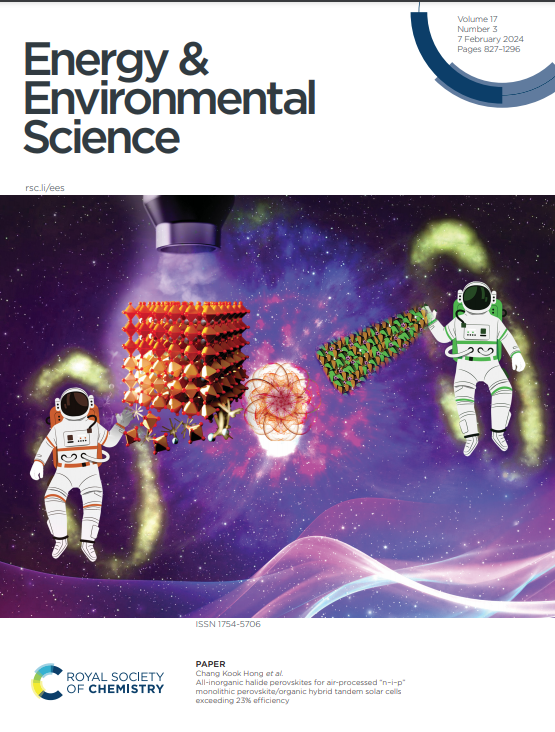Multifunctional additive with dynamic sacrificial S-S bond for building self-assembled monolayers of Zn-ion battery with improved stability and longevity
IF 32.4
1区 材料科学
Q1 CHEMISTRY, MULTIDISCIPLINARY
引用次数: 0
Abstract
Aqueous zinc-ion batteries (AZIBs) possess a tremendous prospect for large-scale energy storage. Nevertheless, the interfacial stability and cyclic reversibility for Zn anode are impeded by the unregulated growth of Zn dendrites and active H2O-induced side reactions. Here, an organic compound bis(2-hydroxyethyl) disulfide (BHED) is proposed as a multifunctional and efficient electrolyte additive, characterized by hydrophilic hydroxyl groups and dynamic sacrificial bonding disulfide bonds. It is discovered that BHED can optimize the Zn2+ solvation structure and construct a water-blocking barrier on the Zn anode surface. Besides, BHED undergoes reductive decomposition, promoting the in-situ formation of a self-assembled monolayer (SAM) with highly active zincophilic sites on the Zn anode surface. Notably, the unique SAM serves a dual function. It stabilizes the anode/electrolyte interface by trapping active H2O and guides Zn2+ to deposit uniformly and orderly onto the (002) crystal plane. As a result, the Zn||Zn symmetric cells containing BHED additive achieve Zn2+ uniform plating/stripping exceeding 6300 h at 0.5 mA cm-2 and 0.5 mAh cm-2. Furthermore, the Zn||NH4V4O10 full cells maintain a capacity retention rate of 73.9% following 3000 stabilized cycles at 5 A g-1. This work offers novel perspectives for the advancement of stable and long-lasting AZIBs.求助全文
约1分钟内获得全文
求助全文
来源期刊

Energy & Environmental Science
化学-工程:化工
CiteScore
50.50
自引率
2.20%
发文量
349
审稿时长
2.2 months
期刊介绍:
Energy & Environmental Science, a peer-reviewed scientific journal, publishes original research and review articles covering interdisciplinary topics in the (bio)chemical and (bio)physical sciences, as well as chemical engineering disciplines. Published monthly by the Royal Society of Chemistry (RSC), a not-for-profit publisher, Energy & Environmental Science is recognized as a leading journal. It boasts an impressive impact factor of 8.500 as of 2009, ranking 8th among 140 journals in the category "Chemistry, Multidisciplinary," second among 71 journals in "Energy & Fuels," second among 128 journals in "Engineering, Chemical," and first among 181 scientific journals in "Environmental Sciences."
Energy & Environmental Science publishes various types of articles, including Research Papers (original scientific work), Review Articles, Perspectives, and Minireviews (feature review-type articles of broad interest), Communications (original scientific work of an urgent nature), Opinions (personal, often speculative viewpoints or hypotheses on current topics), and Analysis Articles (in-depth examination of energy-related issues).
 求助内容:
求助内容: 应助结果提醒方式:
应助结果提醒方式:


